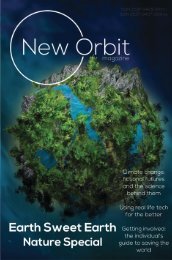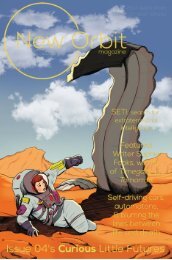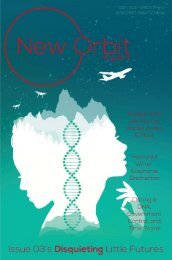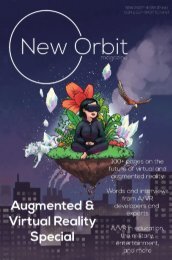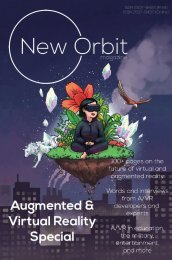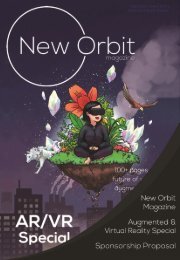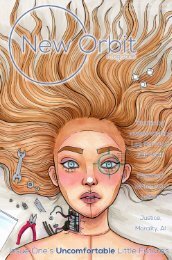New Orbit Magazine Issue 08; Feb 2020, The Future of Animals
- No tags were found...
You also want an ePaper? Increase the reach of your titles
YUMPU automatically turns print PDFs into web optimized ePapers that Google loves.
A few years ago, Spanish biologist and
hobby beekeeper Federica Bertocchini
was struggling with a waxworm
infestation in her beehives. These
worms, larvae of the Galleria mellonella
moth, are often found inside
honeycombs, eating honey and the
harder-to-digest wax created within.
One way of getting rid of these worms
is simply by picking them up and taking
them elsewhere – which is exactly what
Bertocchini did. However, while
collecting all of the worms she could see
into a plastic supermarket bag,
Bertocchini soon noticed that the pests had freed themselves by eating through the inorganic
plastic as if it were just another garden leaf. Such an observation was too strange to pass up;
she contacted some colleagues at the University of Cambridge with this find straight away.
A little experimentation revealed some amazing news: the waxworms weren’t just biting
through the plastic and escaping, as Bertocchini might have feared; they were eating and
digesting the inorganic polyethylene, and somehow transforming it into ethylene glycol – a
wholly organic compound.




